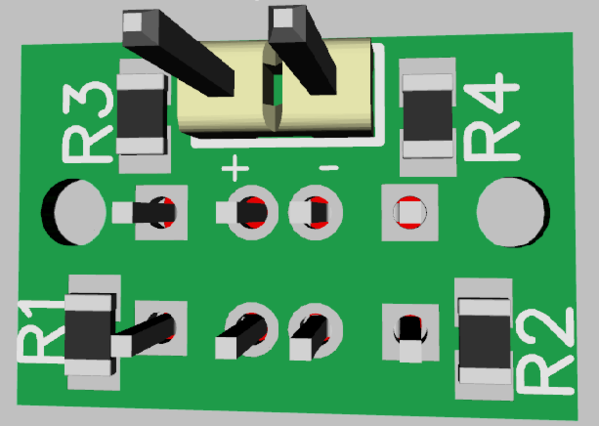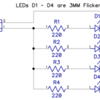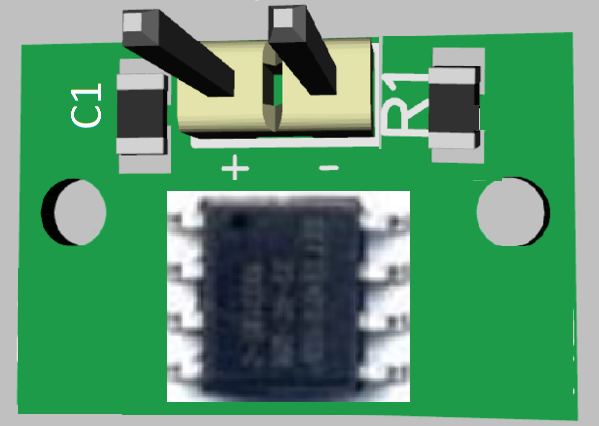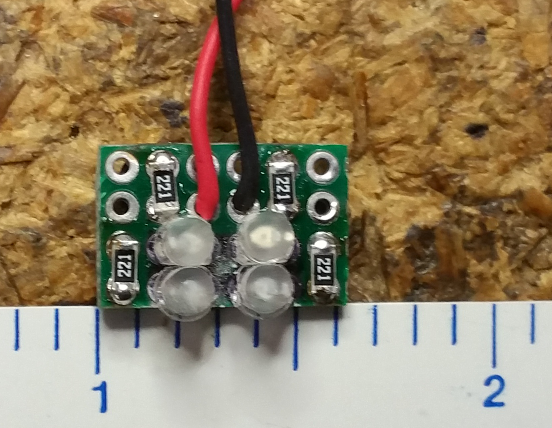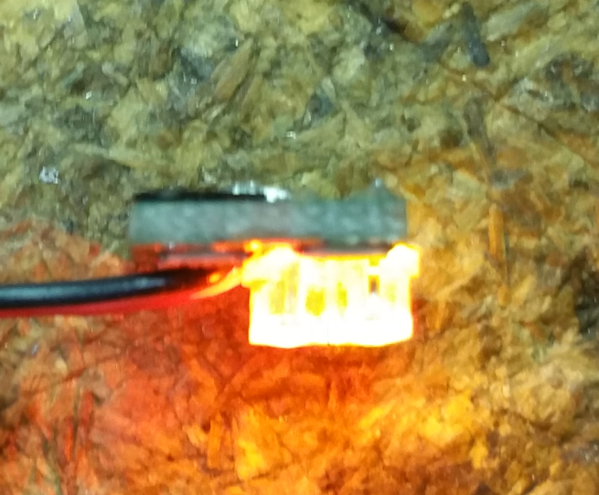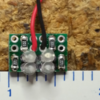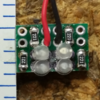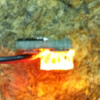If size matters (grinding down a 3mm flickering LED), you might try a microcontroller driving thin surface-mount LEDs. I know those flickering LEDs are inexpensive...but an 8-pin surface-mount microcontroller is less than 50 cents and could drive 4 generic surface-mount LEDs (a few pennies each) in a flickering pattern. Here's an example of a small, thin PCB with an 8-pin microcontroller and 3 size 0603 (0.06" x 0.03") orange LEDs. The microcontroller has a simple program generating "random" numbers to flicker the 3 independent LEDs.

In the above case, the flickering was to simulate 50 cal machine gun "flicker" on a 1/48 scale P-51. An 8-pin microcontroller as shown could drive 4 surface-mount LEDs of course; actually I made such a board to drive 4 flickering LEDs to simulate the 4 nose guns of a P-38 Lightning but can't find the photos. Obviously the colors of the LEDs could be mixed for your multi-color firebox.
Once you have a 50 cent microcontroller chip performing the "flickering" all kinds of opportunities come into play. Here's another tiny surface-mount PCB with a larger microcontroller driving 12 surface-mount size 0603 LEDs - 6 orange, 6 blue. This is simulating the exhaust flicker/flames of a P-51 Merlin 12-port engine, 6 exhaust stacks per side, in a 1/48 scale model.

In addition to "flickering" the LEDs, the microcontroller chip can control the ratio of orange and blue LEDs to simulate fuel mix adjustment or cleaner "blue" burn. Again, this is a very thin assembly using all surface mount components and 0603 surface-mount LEDs.
In the case of firebox flicker, I wonder if the "average" color of the glow shifted with power or time. There's that corny MTH steam engine cab chatter, "Those black diamonds are red hot!"
And here they are in action. I dug these photos/videos out from a while back so the quality is a bit lacking.
![]() This takes 5VDC (the flickering LED's require filtered DC) and runs the four individual LED's. I use a mix of red, orange, and yellow bulbs to get a really interesting effect. I normally grind the face off the LED's to diffuse the light output, and it also helps to reduce the thickness of the assembly, sometimes there isn't much room back at the firebox.
This takes 5VDC (the flickering LED's require filtered DC) and runs the four individual LED's. I use a mix of red, orange, and yellow bulbs to get a really interesting effect. I normally grind the face off the LED's to diffuse the light output, and it also helps to reduce the thickness of the assembly, sometimes there isn't much room back at the firebox.





